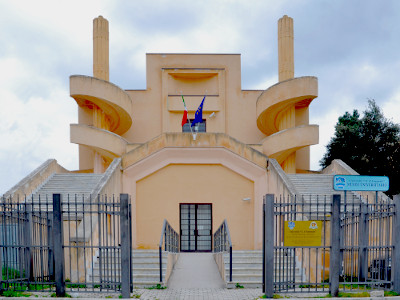
The first nucleus of the exhibitions of the University Museum of Chieti was inaugurated in 1994 at the ‘G. d'Annunzio’ University, based in the De Pasquale Palace. Then, on 21 January, 1998, with the opening of the 1997-1998 Academic Year, the museum was opened to the public at the University Campus in Madonna delle Piane.

From 21 March, 2005, the Museum has been based at the Arnaldo Mussolini Palace (the former Enal Palace) in the historic centre of the city of Chieti. Then in 2010, it was transformed from the Museum of the History of Biomedical Sciences into the University Museum, with its own autonomy and a new set of statutes. Through its speciality, the University Museum contributes to the character of the ‘G. d'Annunzio’ University by providing a "place for memories” and exhibition space dedicated to the knowledge and dissemination of the Natural Sciences and the History of Science. This comes with special focus on the biological and medical aspects that emerge from archaeological, medical, anthropological and palaeontological research, and also with specific sections that are dedicated to Natural History and the History of Science.
A specialised library is open to the public, and large storage rooms are accessible to specialists. Here, what is on offer for the visitor embodies the dissemination and education mission of this University Museum. In this Museum, every effort has been made to make scientific messages easily approachable, by bridging the gap between specialist themes and the general public and students. In 2011, there were more than 13,000 visitors to the Museum. The Museum is also home to specific training courses, with university courses that provide certified qualifications in museological matters.
At present, the Museum collections include more than 19,000 records from the fields of palaeontology, prehistory, anthropology, botany and zoology, and only recently these have been further enriched by the addition of scientific instruments and pieces of modern art.
The Naturalist Collection is on display in the large auditorium hall of the Museum, and it consists of a large collection of plants and animals that were preserved by various methods (formalin-fixed, dried or stuffed) and mainly includes specimens that were collected and prepared locally in the second half of the 1800s. This collection is the result of a series of donations and bequests that were received from public bodies, such as the ‘G.B. Vico’ Upper Secondary School of Chieti, and by individuals, and also of collections prepared in the laboratories of the Museum itself.
Currently only a wide selection of vertebrate animals is visible to the public, which is represented mostly by fish, birds and mammals, all of which have recently been restored to their original state. The part of the collection that is currently on display contains rare and even extinct species, all from the territory of Chieti, or at least from the Abruzzo region. Just as an example, we recall the great specimen of Aquila chrysaetos (golden eagle), with its nineteenth-century label that recalls how the specimen was captured in the city centre of Chieti; or the splendid specimen of Felis silvestris (wild cat ) from the Chieti province, which is a subspecies that can no longer be found in our area.
For all these characteristics, the biological collection has great educational value, but above all, it has a significant scientific importance. This is the reason why the technicians of the Museum are currently working to increase the part of the public collection that is on display. This will also include specimens of other classes of vertebrates (reptiles, amphibians), with at least a selection of invertebrate animals, and above all, with a selection of plants in nineteenth-century herbaria, which are currently being restored.